
French Wine – Ultimate Guide to Regions, Labels & Vocabulary
How to Order Wine in France: Decoding French Wine Labels, Regions, Phrases & Tips
Knowing how to order wine in France takes much more than a few “essential phrases” in a guidebook. That’s because French wine labels are virtually impossible to decode if you don’t speak French (or don’t know the first thing about wine).

For those of you whose interests fall somewhere in the Venn diagram of wine tasting, visiting France and learning the French language, we’ve created this no-nonsense guide specifically for you.
The 11 Most Famous French Wine Regions
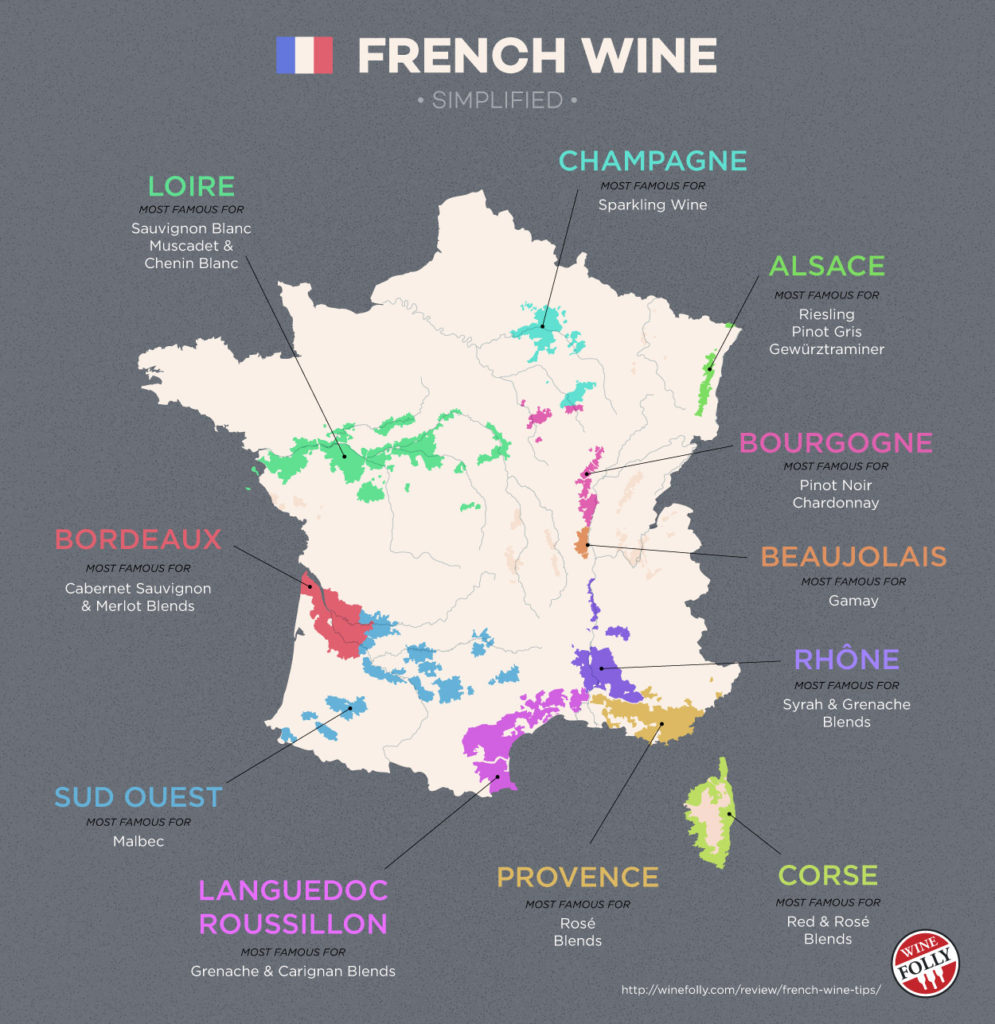
Although many French wine labels completely omit the region on the label and just put the producer and appellation (see wine terms below for further explanation), it’s still helpful to start with a birds-eye-view of France’s most famous wine regions. These 11 most popular wine regions will give you an idea of WHERE the wine you are ordering comes from.
1. Loire

- Famously known for their Chenin Blanc, Muscadet, and Sauvignon Blanc.
- Sauvignon Blanc takes on many names in the Loire from its different appellations, the most notable being Sancerre, Vouvray, and Pouilly-Fume.
2. Champagne
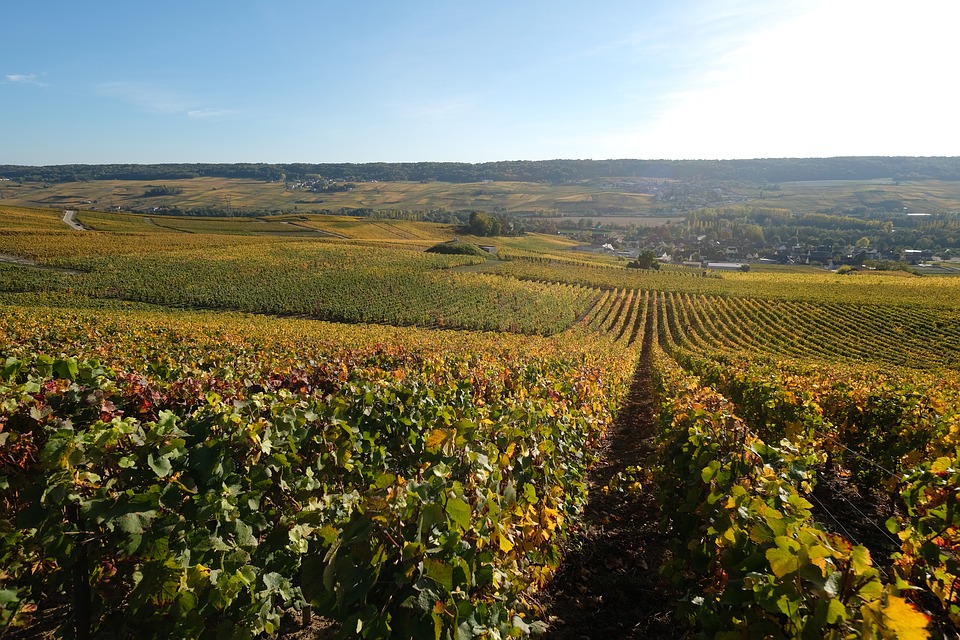
- The only region in the world Champagne can legally call home.
- Champagne wine is made from Pinot Noir, Pinot Meunier & Chardonnay.
3. Alsace
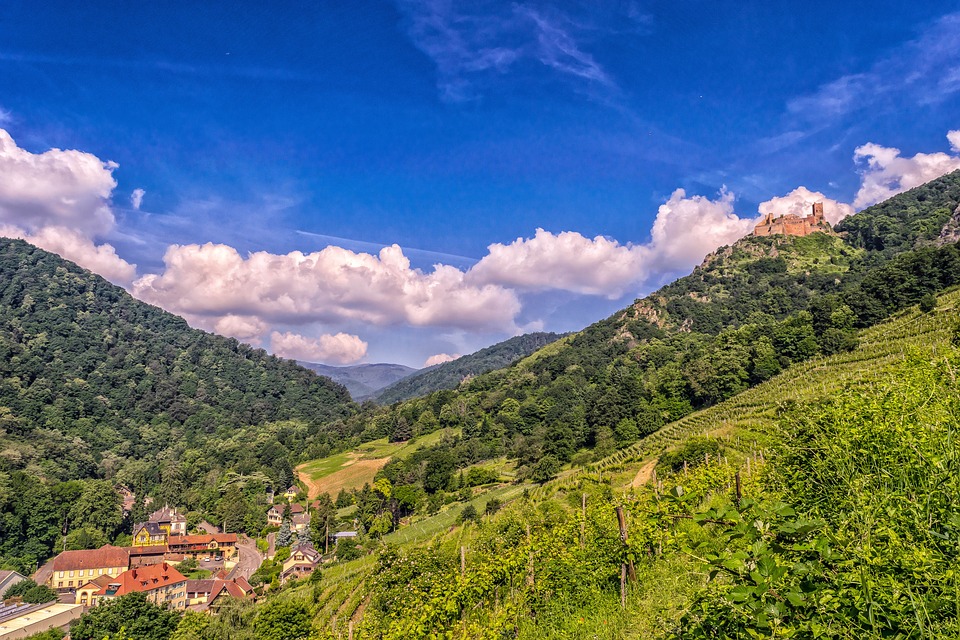
- Located right on the border of Germany and home to many Germanic grapes.
- Riesling, Pinot Gris, and Gewurztraminer are the most famous grapes produced here.
4. Bourgogne (Burgundy)
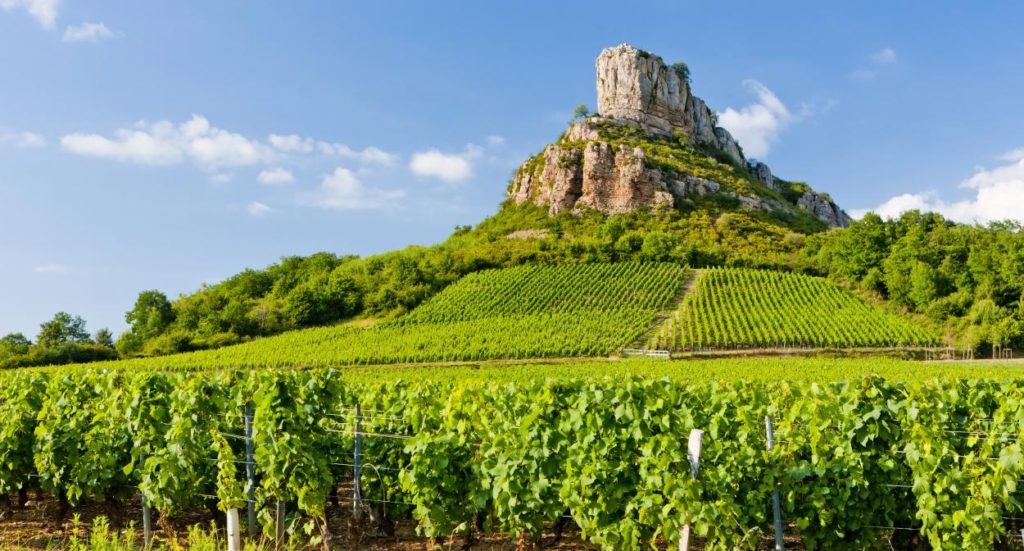
- Burgundy is the most legendary French wine region and, consequently, the most expensive.
- They are known for their Pinot Noir and Chardonnay (most famously Chablis).
5. Beaujolais
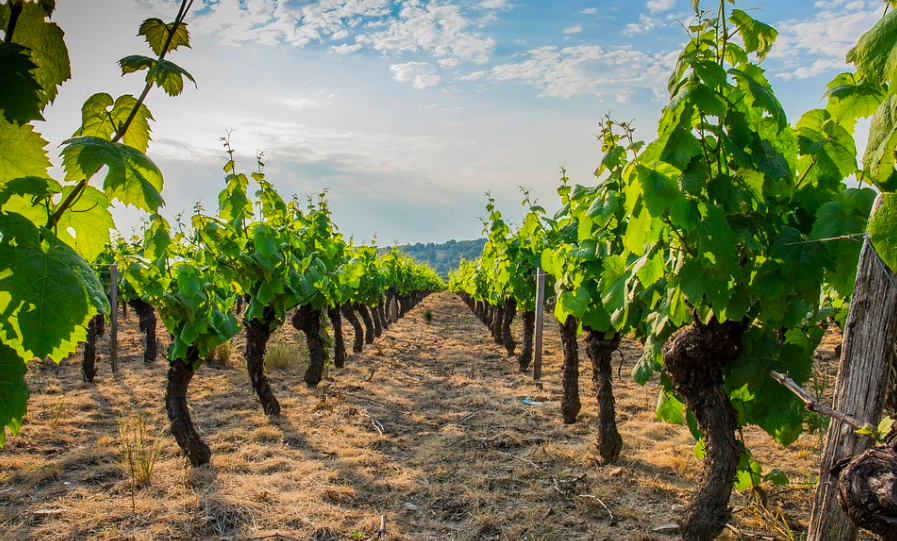
- This region is famous for its Gamay (and sometimes even sparkling Gamay), one of the lightest, simplest styles of red.
6. Rhône

- Best known for its steep slopes.
- Blends of Syrah and Grenache are the most popular, followed by other famous red varietals like Mourvèdre, Carignan, and Cinsault.
7. Corse (Corsica)
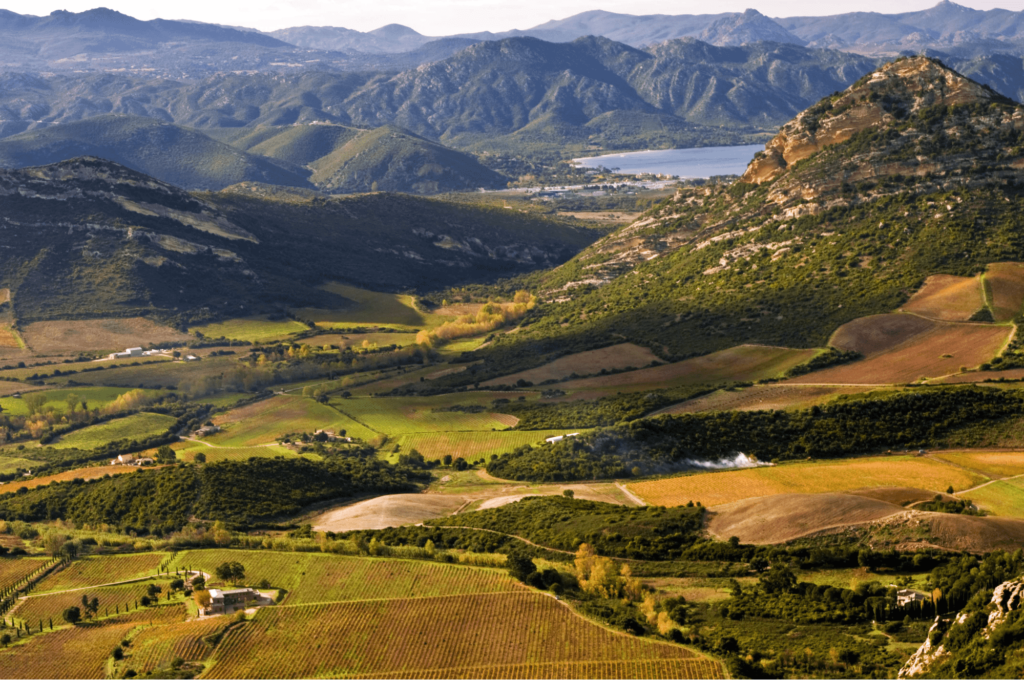
- Gorgeous vineyards line the mountainous island terrain of Corsica.
- The island is most famous for its red blends and rosé.
- It’s home to many Italian grapes, notably Nielluccio, Sciacarello (red), and Vermentino (white).
8. Provence
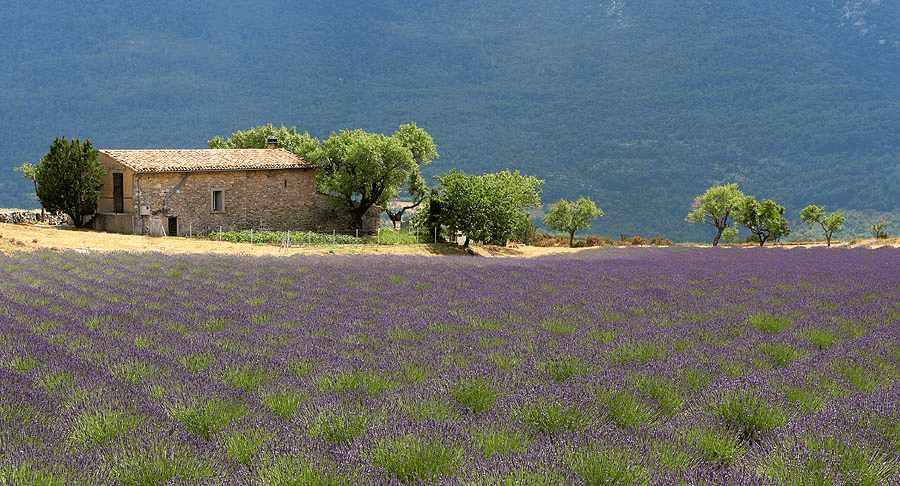
- The southern region is first and foremost known for its lavender.
- Home to some of our most internationally beloved rosés, like Whispering Angel.
- The most grown red grape varieties are Cinsaut, Mourvèdre, and Grenache.
9. Languedoc Roussillon
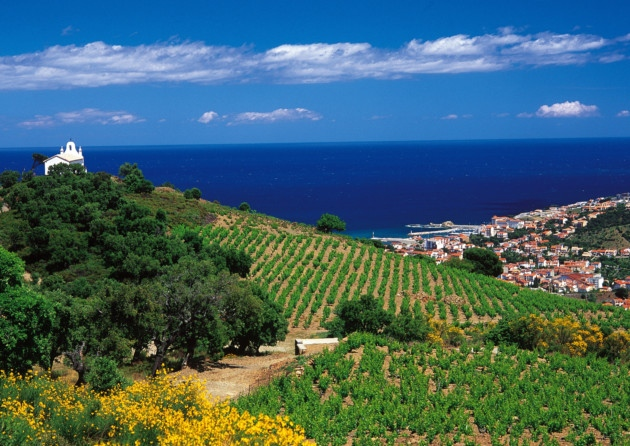
- The southern region is known for its long, intense periods of sunshine.
- Most famous for red blends of Grenache and Carignan.
10. Sud Ouest (South West)

- Home of the French Malbec (the more brooding and firm counterpart to its fruitier Argentinian cousin).
11. Bordeaux
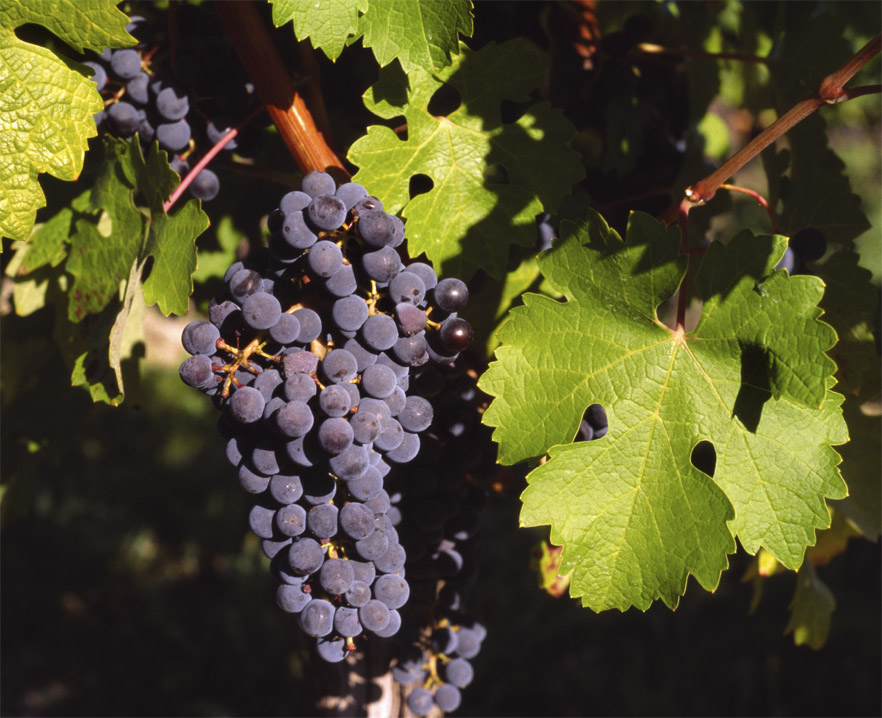
- Home to the world’s largest wine museum, La Cité du Vin (the city of wine).
- Most famous for blends of Cabernet Sauvignon & Merlot.
35 Common French Wine Terms to Help You Understand French Wine
Now that we can recognize where the wine is coming from, let’s cover the most essential French wine terms you’ll encounter in every café, épicerie (convenience store), restaurant, or supermarket.
You might recognize a handful of these words because they are some of many English words borrowed from French. Nonetheless, they will be instrumental in your wine-buying (and then drinking) journey!
1. Appelation
Literal: A name or title (from the French verb appeler → to call)
Contextual: A geographical area legally defined by the country where the wine is grown. Appelations tell you where the grapes for a given wine were grown. By law, some appelations restrict the following:
- The geographical boundaries of the appelation
- What grapes may be grown
- The maximum grape yields
- The alcohol level
- Other quality-related factors
Why is this important? Many French wine labels will just provide the appelation and not the grape variety because they will assume that you know the grape varieties grown in said appelation, i.e., Saint-Emilion almost exclusively produces red blends of Merlot and Cabernet Franc.
2. Biologique
Literal: Biological
Contextual: Organic (French wine that is biologique was made from grapes that were grown organically without chemicals.)
3. Blanc de Blancs
Literal: White of Whites
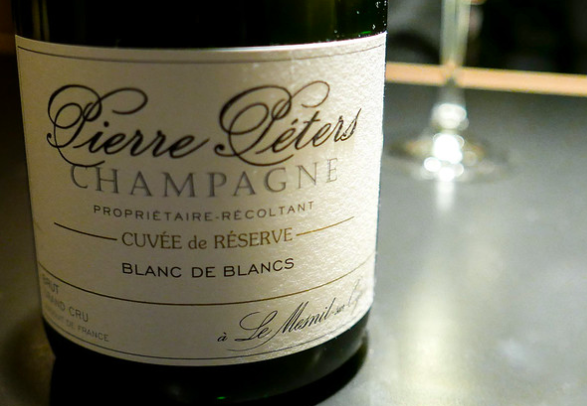
Contextual: White sparkling wines that were made with 100% white grapes (typical Champagne is made of Pinot Noir (red), Pinot Meunier (red) and Chardonnay (white), meaning if a Champagne is denoted “Blanc de Blancs”, it’s made of 100% Chardonnay grapes.)
4. Brut
Literal: Raw
Contextual: Reflects the dry nature of sparkling wine (this means it has the least amount of sugar on the sweetness scale, which ranges from brut nature to demi-sec.)
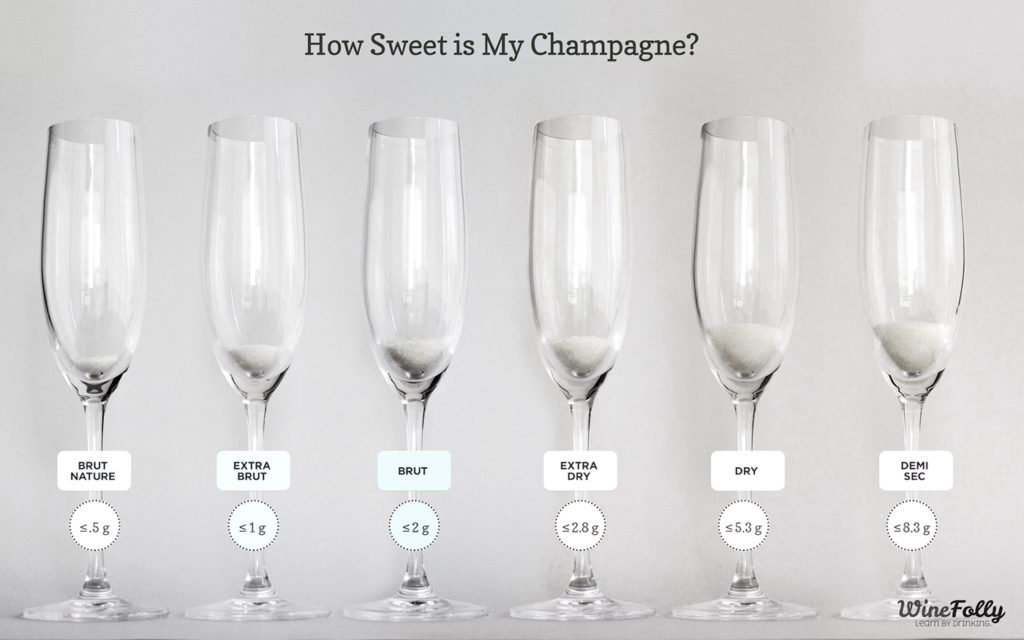
5. Blanc de Noirs
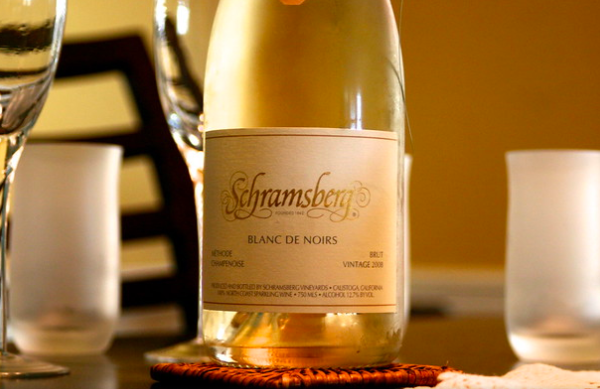
Literal: White of blacks
Contextual: Sparkling white wine made with 100% red grapes – wine attains its red color from sitting on the grape skins (meaning you can still make white wine with red grapes if you don’t let them sit on the skins) which is the case of Blanc de Noirs.
6. Cave Viticole
Literal: Wine cave/cellar
Contextual: Wine cellar
7. Cépage
Literal: Variety of vine, grape variety
Contextual: The type of grapes that go into a given wine, i.e. Merlot and Cab Franc.
8. Château

Literal: Castle
Contextual: A winery, followed by a proper name, i.e. Château de Blois.
9. Clos
Literal: Closed, enclosed
Contextual: A vineyard that is walled in or enclosed, i.e. Clos d Vougeot.
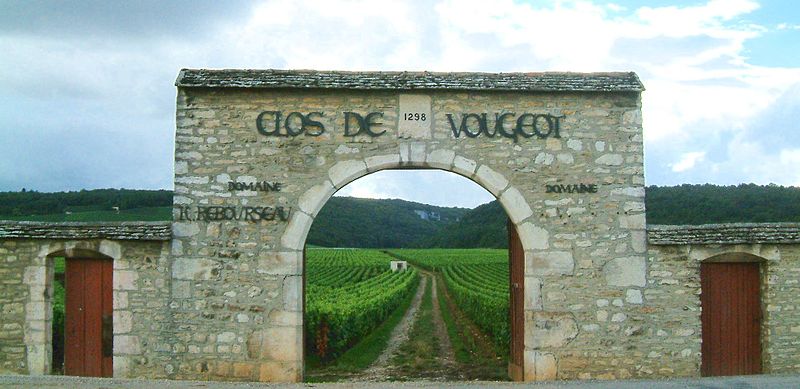
10. Côtes
Literal: Coasts (côtes de France → the French coasts), also ribs (côtes de porc → pork ribs)
Contextual: Wine that comes from grapes grown on a hillside or on raised slopes, usually grown contiguously (this often puts excess strain on the vines, making them push deeper into the soil and reflecting the unique soil of the region, i.e. Côtes de Provence.)
11. Coteaux
Literal: Hills
Contextual: Wine that comes from a group of sloping hillsides, not necessarily contiguous, i.e. Coteaux de Peyriac.
12. Cru
Literal: Growth
Contextual: A single vineyard or group of vineyards that are usually recognized for quality.
13. Cuvée
Literal: Tank or vat (where wine is fermented or aged)
Contextual: Used to denote a specific wine blend or batch – typical of Champagne to denote the first, gentle pressing of the best juice (but some producers use it arbitrarily to refer to the fact that it was in a tank at some point, which does not denote quality and is not regulated.)
14. Demi-Sec
Literal: Half dry
Contextual: Off-dry (meaning on the sweet side of sparkling wine.)
15. Domaine
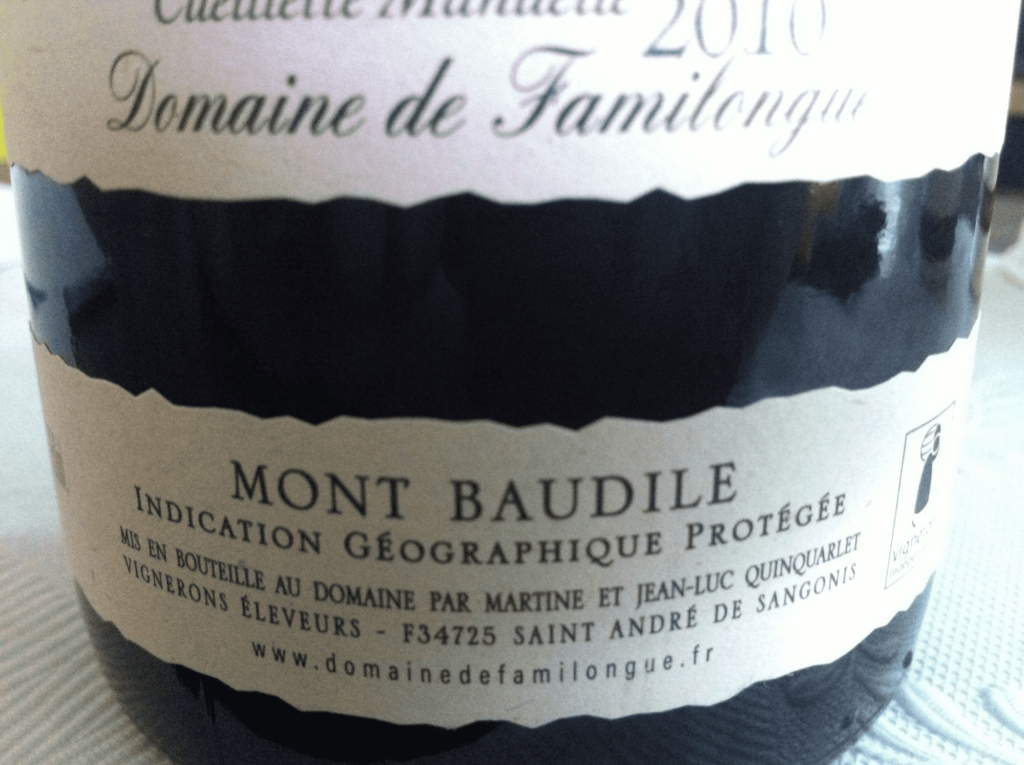
Literal: Field/domain/area
Contextual: A winery estate.
16. Doux
Literal: Sweet
Contextual: Sweet sparkling wines.
17. Élevé en fûts de chêne
Literal: Brought up/aged in oak barrels
Contextual: Wine that has been aged in oak barrels.
18. Grand Cru
Literal: Great growth (from the French verb croître)
Contextual: A term used in Champagne & Burgundy to denote the best vineyards (based on terroir.)
19. Grand Vin
Literal: Great/big wine
Contextual: A winery’s first label, a.k.a. best wine – is used mostly in Bordeaux, where 2nd or 3rd labels usually vary quite a bit in quality and price.
20. Millésime
Literal: Vintage
Contextual: Used to reflect the vintage date or the year in which it was produced (this is typical of the Champagne region.)
***More international brands like Don Perignon have the word vintage in English

21. Mis en bouteille à la propriété/au château/au domaine
Literal: Put in bottle at the property/winery
Contextual: Used to identify a wine that is bottled at that certain property (as opposed to at a bottle factory elsewhere).
22. Moelleux
Literal: Mellow, soft
Contextual: Sweet wine
23. Mousseux
Literal: Frothy (from mousse)
Contextual: Sparkling wine
24. Non-filtré
Literal: Not filtered
Contextual: An unfiltered wine – when you don’t filter wine, you’ll find it is often hazy and has some residual sediment at the bottom of the bottle (mostly dead yeast cells or grape solids), which can leave behind rich aromas, and flavors, and often an appealing texture that would have otherwise been removed via the filtration process.
25. Pétillant
Literal: Bubbly
Contextual: Refers to lightly sparkling wine – the word can be used to describe wine, water (l’eau pétillante → sparkling water), and even people as a personality trait (une personne pétillante → a bubbly/bright person).
26. Premier Cru (1er Cru)
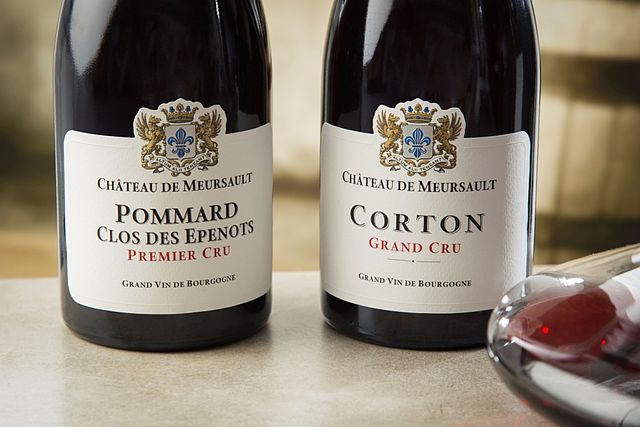
Literal: First growth
Contextual: A term to distinguish the 2nd best vineyards in Champagne and Burgundy (in relation to Grand Cru).
27. Propriétaire-Récoltant
Literal: Owner-grower
Contextual: A term found on a wine label indicates that the owner is the same as the winegrower and usually has deep insight into the quality of the grapes (this term is often used for family-owned wineries, which have sometimes been in the family for centuries.)
28. Sec
Literal: Dry
Contextual: Not sweet
29. Supérieur
Literal: Superior
Contextual: France has many regulatory laws regarding wine appelations – In the case of supérieur, this factor, which is common in Bordeaux, is used to describe wine with higher aging and minimum alcohol requirements than the average wine.
30. Sur Lie
Literal: On lees (dead yeast)
Contextual: Denotes wine aged on its lees (this practice is applied to give wine more body and smoother taste.)
31. Terroir
Literal: Terroir (from the word terre → earth)
Contextual: The natural environment in which a wine is grown and produced, which includes the following factors:
- Soil
- Topography
- Climate
- Diurnal temperatures.
32. Vendangé à la main
Literal: Harvested by hand
Contextual: Wine made with grapes that were harvested by people (as opposed to tractors or machines, an older, more traditional method that is easier on the soil.)
33. Vieille Vignes
Literal: Old vines
Contextual: Wine made with grapes from old vines (older vines typically produce wine that is more true to the terroir because they have had more time to grow roots into the soil.)
34. Vignoble
Literal: Vineyard
Contextual: Vineyard
35. Vin Doux Naturel (VDN)
Literal: Naturally sweet wine
Contextual: Typically a fortified dessert wine (often with brandy.)
Now Take a Crack at Decoding French Wine Labels on Your Own!

How to Order Wine in French: 18 Essential Phrases
We’ve created a list of the most useful phrases, from basic to advanced, for ordering wine in French, but as a disclaimer, this is only the beginning.
You should develop a strong connaissance of core vocabulary and pronunciation to build up the courage to speak confidently to waiters and tasting room associates.
Try a free week of our Pimsleur French where you can access all of our courses, Voice Coach pronunciation trainer, quizzes, videos, and more.
Without further ado,
The Best 18 French Phrases to Order Wine in a Restaurant, Vineyard, or Épicerie.
1. Je voudrais voir la carte des vins, s’il vous plaît.
I would like to see the wine list, please.
2. Je voudrais commander du vin, s’il vous plaît.
I would like to order some wine, please.
3. Je voudrais un verre (une bouteille) de vin, s’il vous plaît.
I would like a glass/bottle of wine, please.
4. Avez-vous une bouteille de Bourgogne dans les 40 euros?
Do you have a bottle of Burgundy in the 40 euro range? (more at a vineyard/wine shop than a restaurant)
5. Avez-vous une autre bouteille à un prix plus abordable?
Do you have another bottle at a more affordable price?
6. Vous êtes prêts à mettre combien?
(An employee might ask) How much are you looking to spend?
**Note the highly informal nature of the way the question is phrased.
7. Quel est votre budget?
(A bartender/waiter might ask) What is your budget?
8. Notre budget est 50 euros maximum. (Dans les 50 euros environs.)
(Answer to the previous two questions) 50 euros max (just about in the 50 euro range)
9. Avez-vous du vin blanc sec/doux?
Do you have any dry/sweet white wine?
10. Avez-vous un vin rouge fruité/sec?
Do you have a fruity/dry red wine?
11. Quel est le millésime?
What is the vintage (what year was it bottled)?
12. Qu’est-ce que vous pouvez me dire sur ce millésime?
What can you tell me about this vintage?
13. J’aimerais bien goûter ce vin!
I would really like to try that wine!
14. Santé/tchin tchin!
Cheers!
15. On voudrait une autre bouteille, s’il vous plaît.
We would like another bottle, please.
**Note the informal use of the pronoun on instead of nous. Nous is far too formal for an ordinary restaurant setting.
16. C’est très bon!
It’s very good!
17. Desolé(e) mais je crois que le vin est bouchonné.
(Returning the wine) I’m sorry but I believe the wine is corked.
18. (Super Advanced) C’est un très bon millésime pour cette appellation.
It’s a really good vintage for this appellation.
**This one is to see if you were paying attention!
Before You Head to France, Make Sure to Read These!
Although French wine is unarguably one of the best parts of heading to France, we’ve also prepared some other useful French vocabulary and pronunciation practice for you.
- For travel: Guide to French Airport Vocabulary
- For slang: French Slang: A Guide to Verlan
No Comments for "French Wine – Ultimate Guide to Regions, Labels & Vocabulary"